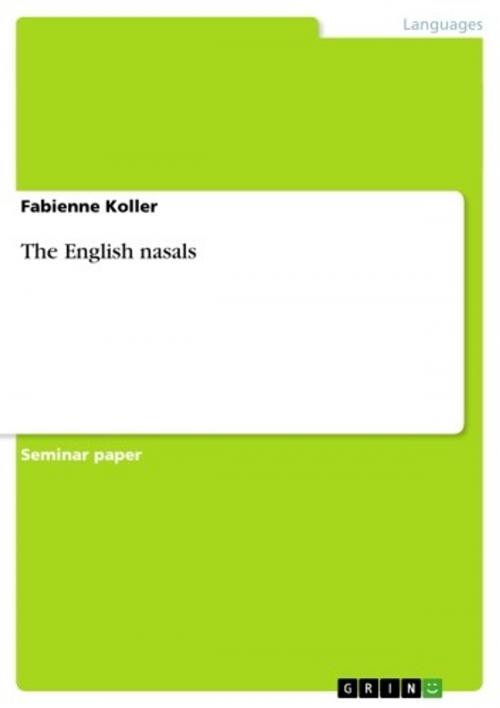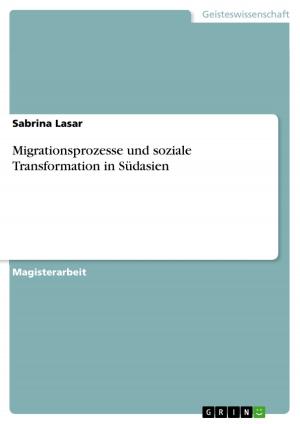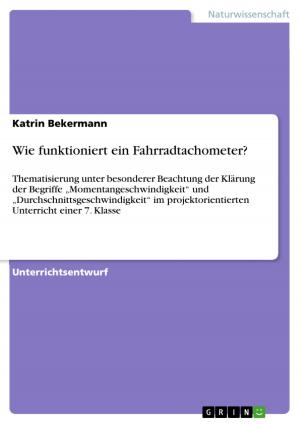| Author: | Fabienne Koller | ISBN: | 9783638070874 |
| Publisher: | GRIN Publishing | Publication: | June 30, 2008 |
| Imprint: | GRIN Publishing | Language: | English |
| Author: | Fabienne Koller |
| ISBN: | 9783638070874 |
| Publisher: | GRIN Publishing |
| Publication: | June 30, 2008 |
| Imprint: | GRIN Publishing |
| Language: | English |
Seminar paper from the year 2007 in the subject English - Miscellaneous, grade: 2,0, University of Heidelberg, 12 entries in the bibliography, language: English, abstract: Phonology is 'the science of the study of speech sounds' (Swadesh 1934: 43). In order to classify distinct speech sounds, the manners and places of articulation play an important role. Places of articulation are for instance, bilabial or labiodental. Manners of articulation are for instance, plosive or fricative. As they help to define a sound in more detail, they express phonemic contrasts. Consequently, within this linguistic study, sounds are observed for their articulatory, acoustic and auditory features. Such characteristics are important to provide phonetic descriptions of sounds (Giegerich 1992: 112). Thus, the examination of human speech sounds during the process of their production is essential in phonology. The English language consists of 26 consonant phonemes (Giegerich 1992: 113). However, in this linguistic paper only the category of the nasal stops will be closely discussed. The first section will deal with the general features of nasal stops. Nasals and non-nasals will be distinguished by explaining the main articulatory and auditory quality of nasals; and by underlining the main class features of sonorants, noncontinuants and consonantals. The second section will take a closer look at the three nasal consonants [m], [n] and [?]. There will be a special focus on the velar nasal [?]. It has a unique role within the category of the nasals. The third and last section will finally underline this function. At this point, two different treatments of the velar nasal [?], from Sapir and Chomsky, will be presented.
Seminar paper from the year 2007 in the subject English - Miscellaneous, grade: 2,0, University of Heidelberg, 12 entries in the bibliography, language: English, abstract: Phonology is 'the science of the study of speech sounds' (Swadesh 1934: 43). In order to classify distinct speech sounds, the manners and places of articulation play an important role. Places of articulation are for instance, bilabial or labiodental. Manners of articulation are for instance, plosive or fricative. As they help to define a sound in more detail, they express phonemic contrasts. Consequently, within this linguistic study, sounds are observed for their articulatory, acoustic and auditory features. Such characteristics are important to provide phonetic descriptions of sounds (Giegerich 1992: 112). Thus, the examination of human speech sounds during the process of their production is essential in phonology. The English language consists of 26 consonant phonemes (Giegerich 1992: 113). However, in this linguistic paper only the category of the nasal stops will be closely discussed. The first section will deal with the general features of nasal stops. Nasals and non-nasals will be distinguished by explaining the main articulatory and auditory quality of nasals; and by underlining the main class features of sonorants, noncontinuants and consonantals. The second section will take a closer look at the three nasal consonants [m], [n] and [?]. There will be a special focus on the velar nasal [?]. It has a unique role within the category of the nasals. The third and last section will finally underline this function. At this point, two different treatments of the velar nasal [?], from Sapir and Chomsky, will be presented.















